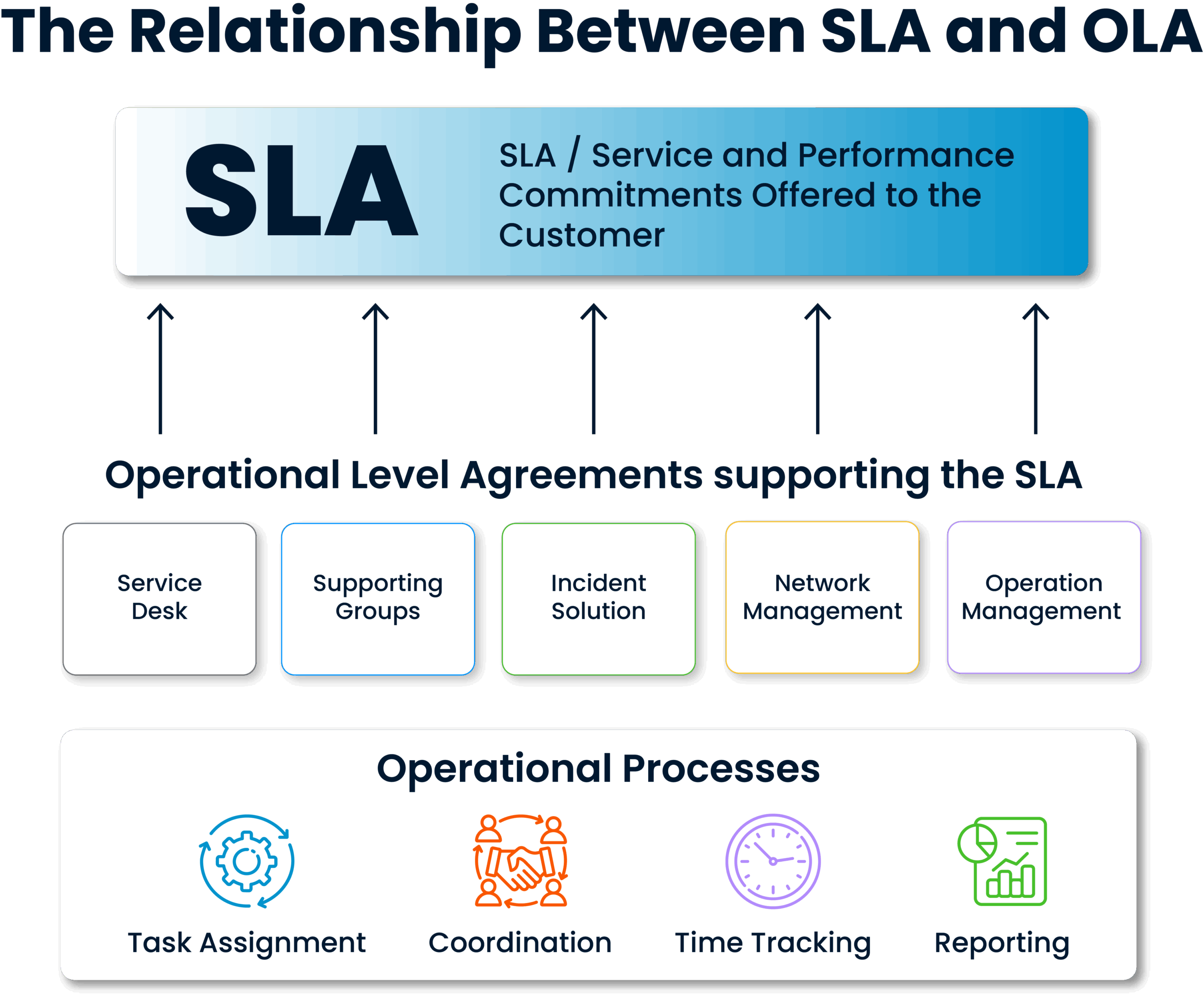In the field of IT service management, most professionals are familiar with the concept of SLA (Service Level Agreement). An SLA defines the service promises made to the customer and the promised performance levels. But have you ever thought about how coordination is established between teams within the organization to back up these promises? At this point, what is Operational Level Agreement (OLA) question becomes important to ensure that customer commitments are implemented in the field. An OLA is an internal agreement that clarifies how IT groups within the company—such as infrastructure, network, or security teams—will collaborate to implement the SLA made with the customer. Its primary purpose is to define responsibilities, standardize processes, and strengthen accountability to ensure that the service levels specified in the SLA can actually be delivered.
The Operational Level Agreement eliminates IT silos by creating a common language among teams, thereby increasing customer satisfaction while providing a solid foundation for operational efficiency and sustainable growth.
What is Operational Level Agreement (OLA)?
The answer of what is operational level agreement (OLA) is an internal plan created to ensure that IT teams within an organization effectively deliver the services promised to the customer under the SLA. While the SLA defines customer-facing performance and service commitments, the OLA clarifies how these commitments will be fulfilled in the field.
For example, when 24/7 support is promised to the customer, the division of responsibilities and coordination between units such as the service desk, support groups, incident resolution teams, network management, and operations management is organized through the OLA.
Within the ITIL and ITSM framework, what is Operational Level Agreement question defines the operational relationships between the IT service provider and different departments within the organization, and all processes are typically documented in a document owned by the Service Management Team. This ensures that each team knows what to do, when to do it, and how to do it; SLA targets are met, IT efficiency is achieved, and operational accountability is ensured. OLA is the invisible building block that makes SLAs possible; it strengthens inter-team coordination, increases transparency in the service chain, and ensures both customer satisfaction and operational efficiency.
To see in detail how ITSM processes work in line with ITIL principles, you can review our article What is ITIL, and how does it relate to ITSM?

Why is an Operational Level Agreement (OLA) Important?
OLA makes SLA applicable in the field and guarantees operational efficiency in IT service management.
Key benefits and what is Operational Level Agreement question means:
- Better internal coordination: Network, infrastructure, support, and development teams collaborate effectively.
- Accountability: It becomes clear who is responsible for what, and performance can be easily tracked.
- Consistent and reliable service: SLA expectations are reliably met, increasing customer satisfaction.
- Fast problem resolution: Incidents are resolved quickly because incident management and response times are clear.
- Resource efficiency and profitability: Operational bottlenecks are eliminated, workflows and personnel are used effectively.
- Scalability: Personnel and processes adapt to increasing workloads.
With metrics such as key performance indicators, response times, escalation criteria, and incident management, the answer what is Operational Level Agreement question ensures that SLA targets are met and supports performance in ITSM processes.
What Are the Key Differences Between OLA and SLA?
SLA (Service Level Agreement)
Although SLA and OLA are often mentioned together, their roles and scopes are different:
Defines customer-facing commitments and guarantees external performance. For example, OLA clarifies how long it will take to resolve a support request. This ensures that not only are SLA targets met, but the end-user experience can also be measured and improved. In other words, XLA is also enhanced. This ensures both operational efficiency and user satisfaction.
Implementing OLA and SLA in the field also optimizes the user experience. To see in detail the role of XLA in ITSM processes and how it works with SLA, check out our blog post How are XLA and SLA implemented in ITSM processes?
OLA (Operational Level Agreement)
Implemented between IT teams within the organization, it ensures that SLA targets are achieved in the field. It details each department’s responsibilities, critical service steps, response and resolution times, escalation criteria, and performance metrics.
In summary, while the SLA specifies “what to do” from the customer’s perspective, the answer of what is Operational Leve Agreement outlines “how to do it” from the internal operations perspective. The success of the SLA is directly dependent on the effectiveness of the OLA; without the OLA, the SLA remains merely on paper. This technical distinction ensures accountability and operational efficiency in ITSM processes.




